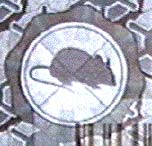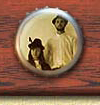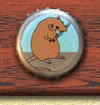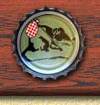Mouse hinders Counterfeiters
First published in WanderRat issue V2N1 (January 1995)
The man grumbles defeatedly at the new shiny silver coin laying in his hand. The rim now has thin ridges around it. He can no longer shave off tiny slivers to cheat future recipients of its original worth without them noticing. He must invent a new way.
The phrase "to make money" can have different meanings, depending on whom you ask. It can be either a monotonous 9 to 5 desk job, poker with the boys, or a hot night in the basement printing the monetary goods at home. Since most governments frown on the last of these answers (many on the second to last as well), a variety of protective measures have been devised to hinder such deceptions.
Most common, as of late, is the watermark. Other recently applied techniques are inlaid threads or strips, various paper types and textures, holographic spots, Braille bumps, bar codes, intricate designs, exotic colors, microscopic text, and now finally... a mouse. It is not just any ordinary mouse, but rather a mouse that is partly printed on each side of the bill. The two separate images must line up perfectly to form a picture when the bill is held up to the light.

The watchful little brown rodent can be found on the upper left corner of the Dutch 100 Gulden bill (worth in 1995 about DM 95 or US $60). Although the mouse is just one in a series of protective measures found on the bill, it is nevertheless an obstacle that any counterfeiter, who wishes to print Dutch currency, must overcome. The remaining question now is: who is more clever, man or mouse?











